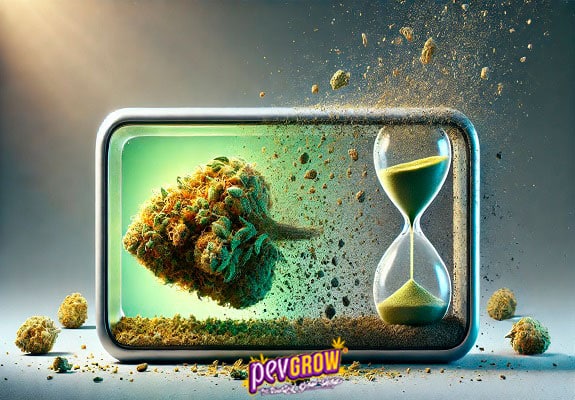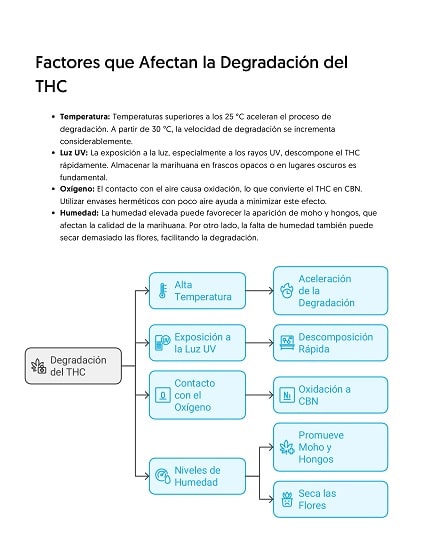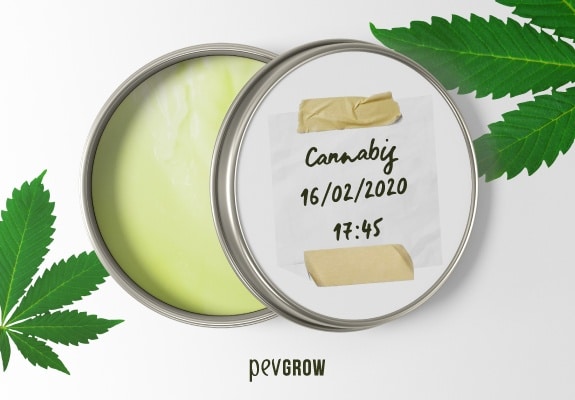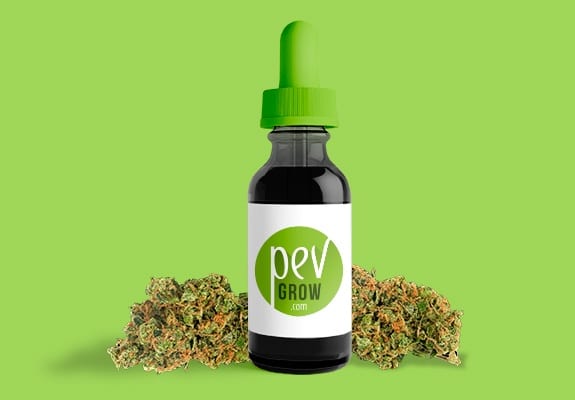

04-10-2024 06:00:57 - Updated: 4 October, 2024
The THC (tetrahydrocannabinol) is the main psychoactive compound in weed, responsible for its characteristic effects. However, this cannabinoid is not stable indefinitely. Over time, THC degrades into CBN (cannabinol), a compound with sedative and less psychoactive properties. This process can affect the potency of weed and its derivatives. In this article, I explain what THC degradation is, how a THC degradation calculator works, and how you can use it to know how much THC remains in your flowers or concentrates after a certain period.
👌 What is THC Degradation?
THC degradation is a natural process that occurs when this compound is exposed to factors such as oxygen, light, and heat. As THC oxidizes, it loses its chemical structure and converts into CBN, reducing its psychoactive potency. This degradation is not linear, nor does it occur at the same speed in all cases, as there are several factors that can accelerate this process. In this sense, it is very important to properly cure the weed and subsequently store the cannabis correctly to minimize potency loss over time. If you want to know more, I recommend reading this article titled how to perfectly dry and cure marijuana.

🚦 Factors Affecting THC Degradation
- Temperature: Temperatures above 25 °C accelerate the degradation process. From 30 °C onwards, the degradation rate increases significantly.
- UV Light: Exposure to light, especially UV rays, breaks down THC quickly. Storing weed in opaque jars or dark places is essential.
- Oxygen: Contact with air causes oxidation, converting THC into CBN. Using airtight containers with minimal air helps minimize this effect.
- Humidity: High humidity can promote the growth of mold and fungi, affecting the quality of the weed. On the other hand, lack of humidity can also dry out the flowers too much, facilitating degradation.
⏰ What is a THC Degradation Calculator?
A THC degradation calculator is a tool that estimates the amount of THC remaining in a cannabis product after a certain period under specific storage conditions. These calculators use formulas based on scientific studies about THC stability to predict how much it degrades over time. Although they have some limitations, they are very useful tools when preserving the harvest for a long time.
🎯 THC Degradation Formula
One of the most commonly used formulas to calculate degradation is as follows:
Residual THC = Initial THC × (1 – k)t
Initial THC: Initial THC concentration.
k: Degradation rate (generally around 0.05 annually under optimal conditions).
t: Time in years.
For example, if we start with 20% THC in a sample and store it for 2 years under ideal conditions, the amount of residual THC would be:
Residual THC = 20 × (1 – 0.05)2 ≈ 18.05%
This indicates that approximately 9.75% of the initial THC has degraded.
✅ How to Calculate THC Degradation?
Calculating THC degradation involves understanding how this compound breaks down over time under different conditions. The degradation process converts THC into CBN, reducing the psychoactive potency of the product. Here’s how to calculate it step by step using a simple formula based on the annual degradation rate.
Basic THC Degradation Formula
To estimate the amount of THC remaining in a product after a period, the following formula is used:
Residual THC = Initial THC × (1 – k)t
Where:
- Residual THC: The percentage of THC remaining after the elapsed time.
- Initial THC: The initial amount of THC in the product (in percentage).
- k: The annual degradation rate. This rate varies depending on storage conditions. A typical value for optimal conditions is 0.05 (5% annually), for normal conditions 0.10 (10% annually), and for poor conditions 0.15 (15% annually).
- t: The time in years during which the product has been stored.
Calculation Example
Suppose you have a marijuana flower with an initial 20% THC and want to calculate how much THC will remain after 2 years under normal storage conditions (with a degradation rate of 10% annually).
Initial data:
- Initial THC: 20%
- Degradation rate (k): 0.10
- Time (t): 2 years
Applying the formula:
Residual THC = 20 × (1 – 0.10)2
Residual THC = 20 × (0.90)2
Residual THC = 20 × 0.81 = 16.2%
After 2 years, the amount of THC remaining in the flowers would be 16.2%.
🧪 THC Degradation Table
| Year | Optimal (5%) | Normal (10%) | Poor (15%) |
|---|---|---|---|
| 0 | 20.00% | 20.00% | 20.00% |
| 1 | 19.00% | 18.00% | 17.00% |
| 2 | 18.05% | 16.20% | 14.45% |
| 3 | 17.15% | 14.58% | 12.28% |
| 4 | 16.29% | 13.12% | 10.44% |
| 5 | 15.47% | 11.81% | 8.87% |
⭐ How to Use a THC Degradation Calculator
Using a THC degradation calculator is straightforward. Typically, these calculators will ask you to enter the following data:
- Initial THC Concentration: The amount of THC the product has at the time of purchase or harvest.
- Storage Time: How long it has been since the product was stored.
- Storage Conditions: This includes factors such as temperature and light exposure. Some calculators allow you to specify whether the product has been stored in a dark and cool place or under less ideal conditions.
Practical Example
Suppose you have a sample of weed with 15% THC, and you have stored it for 1 year at room temperature (20-25 °C) and in a dark place. Using the formula with a k value of 0.05, the residual THC is calculated as:
Residual THC = 15 × (1 – 0.05)1 = 14.25%
This means that under optimal conditions, after one year, you have only lost 0.75% of THC.
✨ Recommendations to Minimize THC Degradation
If you want to preserve the potency of your weed or THC concentrates for a longer time, follow these tips:
- Store in a cool, dark place: Keep products at temperatures between 15-20 °C and avoid direct light exposure.
- Use airtight containers: Minimize contact with oxygen by using storage boxes for weed with airtight seals or vacuum bags.
- Avoid excessive humidity: Maintain relative humidity around 55-62% to prevent mold and degradation.
🥇 Conclusion
THC degradation is an inevitable process, but with the right information and a THC degradation calculator, you can accurately estimate how long your cannabis will maintain its potency. By following good storage practices, you can prolong the shelf life of your products and ensure they retain their effectiveness for longer.
⛳ FAQs
- Does THC degrade faster in warm climates? Yes, high temperatures accelerate THC degradation, especially above 25 °C.
- Can I stop THC degradation? It cannot be completely stopped, but it can be slowed down by storing products under optimal conditions (cool, dark, and with minimal air).
- Does CBN have psychoactive effects? CBN has mild sedative effects but is not psychoactive like THC. It is often used to help with sleep.
- Is there any way to regenerate degraded THC? No, once THC has converted to CBN, the chemical process cannot be reversed.







This article has helped me understand how THC degrades and how I can better preserve my marijuana. Now I know how much THC I can expect to remain in my buds after several months. Very useful and comprehensive!